
New Photos
October 2, 2005
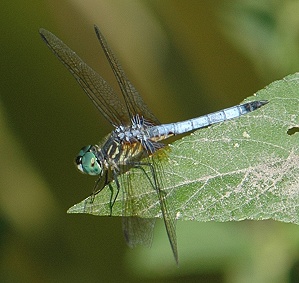 |
 |
| The male Blue Dasher, Pachydiplax longipennis, has the
blue abdomen for which the species is named--and when this perky insect is in flight, blue is all
you see. Perched, the male shows the white face and blue-green eyes. The female has the same white
face, eyes, and striped thorax, but a yellow and black abdomen with white spots on the top. Both
these insects were photographed down by the creek on August 19, 2005. |
|
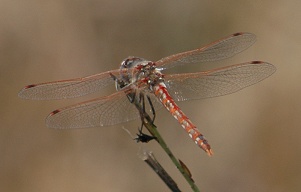 |
 |
| Variegated meadowhawk, Sympetrum corruptum, is another
species with striking sexual dimorphism. From a slight distance, the male looks red and silver: a
red face, silver-gray thorax, and abdomen silver with red rings, and red veins on the leading edge
of the wings. What gives the effect of metallic shine are the little white spots between the red
rings. The female has a tan face, an olive thorax with two white stripes each ending in a vivid
yellow dot, and an abdomen patterned in tan, black, and white. Both these insects were photographed
October 1, 2005. |
|
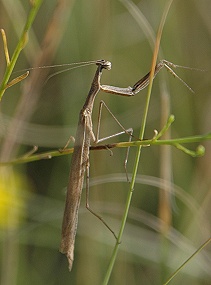 |
This little praying mantis flew across the mowed path ahead of me, and I trailed it into a stand of broomweed and purple gerardia. I don't know which species it is, though it was much smaller than the common big green praying mantis. The most likely, I think, is the Carolina mantis, Stagmomantis carolina. |
 |
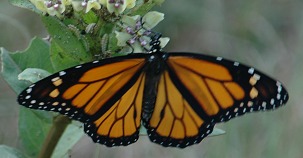 |
| This monarch caterpillar, Danaus plexippus,
appeared to be hiding from the fierce (100 degree plus) sun, but the next morning it had eaten over
half the leaves off this green milkweed, Asclepias viridis. The next day, it had
disappeared, leaving two bare stalks...I hope it found another plant nearby, or pupated
successfully. The adult, wings outspread, is nectaring from a different green milkweed plant. We
are seeing a few migrants every day now. |
|
| Hackberry emperors, Asterocampa celtis, are abundant late summer/fall butterflies in this area, along with their close relatives in the "hackberry butterfly" complex. This one, photographed on the first cool morning after a week of record heat, held still with open wings long enough to be photographed. Usually they flit rapidly away and then perch with their bark-colored underwings showing. This one has also lost the outer tips of both wings. I tried to photograph another with wings folded, but the camouflage is so good that I couldn't distinguish it from the cottonwood bark. | 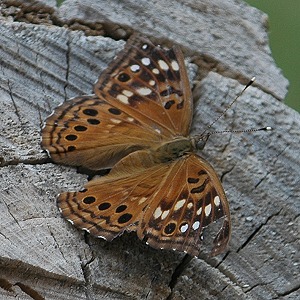 |
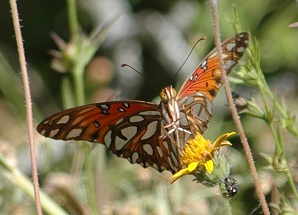 |
Gulf fritillaries, Agraulis vanillae, are more frequent on the place than a few years ago, when I saw them only in fall. This suggests that we have a passion-vine relative--their larval food plant--somewhere around, though I haven't found it. This one is a freshly emerged specimen, nectaring on the same plant as the worn one I photographed back in early summer, this time showing off all the spangled beauty of its underwings. |
![]()

